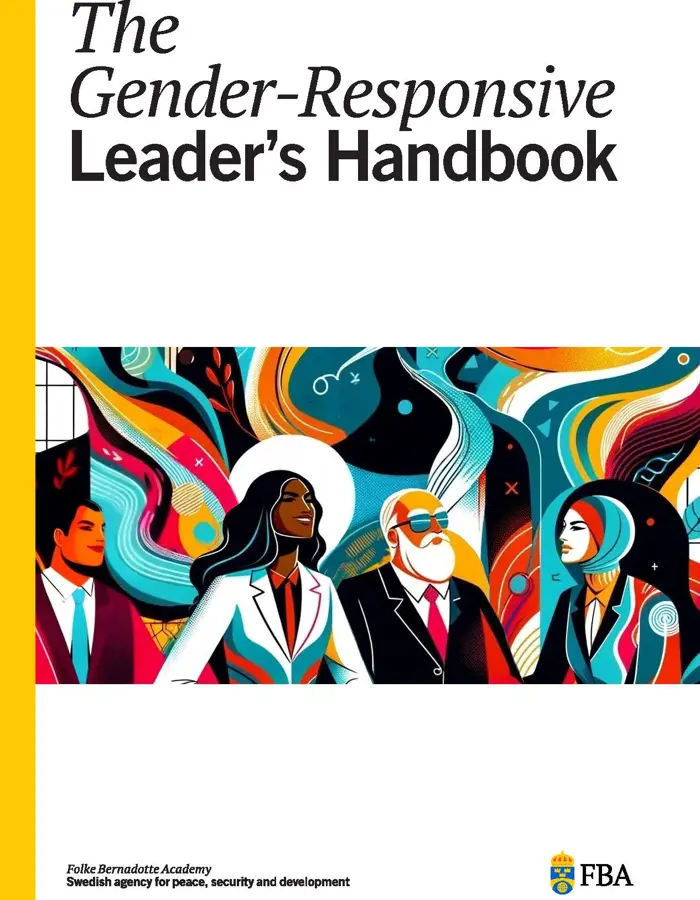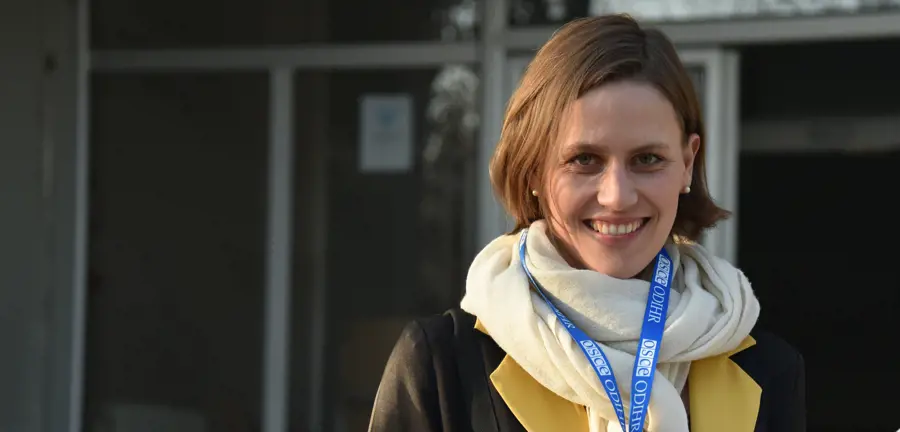Flexible crisis management teams in Armenia set a model for future EU efforts
When democracy is in decline in the world and war is raging in Europe, expectations increase for the EU as a global representative of democracy, human rights and a rule-based world order. The EU is now strengthening its crisis management capabilities and the member states have agreed on a new, so-called civilian compact. In the EU observer mission in Armenia, an approach has been trialled that provides lessons for the future.An important issue that the Swedish EU presidency has driven forward is how the EU's civilian crisis management missions can be made more effective. On 22 May, an agreement was reached that intends to strengthen the EU's crisis management capabilities. A key aspect is that civilian crisis management missions are to be more flexible and better equipped to meet future challenges.
There is a civilian observer mission in Armenia that is seen as a role model for future EU missions. Jenny Oskarsson has been seconded by FBA as head of operations at EUMA, as the new observer mission is called. She takes with her experience as the head of a previous fixed-term mission towards the end of last year, EUMCAP. The mission was to monitor and report on the situation along Armenia’s border with Azerbaijan.
Smaller teams that can work independently
To begin with, she faced a great challenge. Over the short period from October to December and with limited resources of 40 observers, her team was to patrol, observe and report on the development of events along a mountainous border area some 350 kilometres long.
“The landscape is very undulating. A journey that appears short as the crow flies often consists of serpentine roads that go up hills and down dales. We couldn’t do as usual and place everyone in one or two central points and think we could cover the entire area; it would take too long to reach the areas we wanted to observe,” Jenny Oskarsson explains.
Often, all the observers in an EU mission are based in one or a few large central offices. Instead, the group was divided up into smaller units that could each work independently in their own areas, where they lived and worked in hotels between patrols.
“By outplacing colleagues and giving them more responsibility, they soon became experts in their own areas; they did all the patrolling and had contact with the local people. We focused on using existing infrastructure, so that we did not need to go through long processes to start up large offices,” she says.
Collaboration with nearby mission in Georgia
Jenny Oskarsson believes that the reason using smaller, independent teams worked so well was largely thanks to borrowing experienced personnel from the EU crisis management mission in neighbouring Georgia. Support from the mission in Georgia and the use of smaller, independent teams meant that EUMCAP could accomplish its mandate. And the new mission in Armenia has learned lessons from this.
“In Brussels, there was much discussion about having a light footprint, that we were able to quickly adapt to changes in the context. Our way of working means that we can be more flexible. Since the corona pandemic, we have learnt to work remotely. This means that greater use can be made of remote support functions, in Brussels or in other missions. We had great support from our colleagues in Georgia who took care of a lot of the administrative work,” says Jenny Oskarsson.
EUMA began on 20 February 2023 and will continue for two years. As well as observing, analysing and reporting on the situation, the mission now has an extended geographical area and a mandate to contribute to trust-building measures between Armenians and Azerbaijanis.
The conflict between Armenia and Azerbaijan
The conflict between Armenia and Azerbaijan has existed for a long time. The countries’ borders are disputed and in many places badly marked. Armenians and Azerbaijanis have lived in each other’s pockets over the centuries. The countries have a unique geography with formal and informal enclaves and exclaves. One of these is Nagorno-Karabakh, an area within Azerbaijan where the majority of the population are Armenians. During the Soviet period, Nagorno-Karabakh was a self-governing oblast within the Soviet republic of Azerbaijan.
When the Soviet Union fell, a war broke out that ended with Armenia occupying Nagorno-Karabakh and surrounding parts of Azerbaijan. The conflict was then long regarded as a “frozen” conflict.
In 2020, the second Karabakh war broke out when Azerbaijan regained control of a large part of Nagorno-Karabakh and all the surrounding areas that had been occupied by Armenia. About 7,000 soldiers lost their lives before the parties agreed a cease fire, as Jakob Hedenskog, an analyst at the Centre for Eastern European Studies at the Swedish Institute of International Affairs, explains.
South Caucasus consists of Armenia, Azerbaijan and Georgia. Around these relatively small countries lie the regional powers of Turkey, Iran and Russia, which have different interests in the conflict. Jakob Hedenskog believes that Russia, which sees the South Caucasus as part of its sphere of interest, has used the conflict to secure its presence and influence in the area. Among other things, by exporting weapons to both Armenia and Azerbaijan.
Russia negotiated a ceasefire in Nagorno-Karabakh, which began in November 2022. Since then, a Russian peacekeeping force has monitored the narrow corridor of land – the Lachin Corridor – that connects Nagorno-Karabakh with Armenia.
“The Russian peacekeeping force has less and less authority and Azerbaijan has for example introduced a blockade against Nagorno-Karabakh, which is still controlled by Armenians, without the Russian peacekeeping force being able to stop it,” says Jakob Hedenskog.
Since Russia’s full-scale invasion of Ukraine in February 2022, Russian control in the area has been weakened, since the country needed to direct its focus elsewhere.
In September 2022, the conflict worsened again when Azerbaijan made attacks on Armenian territory. This led to the EU introducing the fixed term observer mission EUMCAP Monitoring Capacity Armenia. The mission was brought about at the invitation of Armenian prime minister Nikol Pashinyan after an agreement with Azerbaijan president Ilham Aliyev.
“Both Armenia and Azerbaijan have shown that they consider the EU a more reliable peace negotiator than Russia. Russia has not been entirely rejected, but the discussions between them have not led anywhere. When it comes to Russia, they can see that their main reason for being involved is to continue to control the region. They have turned to the EU, which is seen as being less controlled by its own interests,” says Jakob Hedenskog.
When EUMCAP was concluded on 19 December 2022, it was decided that a new, smaller EU team, EUPAT, would continue the work, partly to a limited extent in patrolling in Armenia but primarily to investigate the opportunities for a larger effort. This led to the EUMA mission.
“Azerbaijan traditionally has very close relations with Turkey, which is sometimes described in terms of “one people two states”. Armenia, which does not have diplomatic relations with Turkey, is closer to Iran. At the same time, as former Soviet republics, both Armenia and Azerbaijan have close ties to Russia. As a Christian country, Armenia has traditionally seen Russia as a protective power against Turks and Persians and this concept still exists. But Armenia was one of the first countries to want to leave the Soviet Union, while Azerbaijan was more loyal. So, on the one hand there is a view of Russia as defender, while on the other hand, in recent years Armenia has tried to orient itself with the EU,” Jakob Hedenskog believes.
The EU strengthens civilian capacity to respond to crises in the world
The EU strengthens crisis management capabilities during the Swedish presidency
Europe's security high on the agenda under Swedish leadership








 >
> >
>

